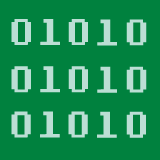Information | Free Full-Text | Application and Investigation of Multimedia Design Principles in Augmented Reality Learning Environments
Feature Papers represent the most advanced research with significant potential for high impact in the field. Feature
Papers are submitted upon individual invitation or recommendation by the scientific editors and undergo peer review
prior to publication.
The Feature Paper can be either an original research article, a substantial novel research study that often involves
several techniques or approaches, or a comprehensive review paper with concise and precise updates on the latest
progress in the field that systematically reviews the most exciting advances in scientific literature. This type of
paper provides an outlook on future directions of research or possible applications.
Digital media have changed the way educational instructions are designed. Learning environments addressing different presentation modes, sensory modalities and realities have evolved, with augmented reality (AR) as one of the latest developments in which multiple aspects of all three dimensions can be united. Multimedia learning principles can generally be applied to AR scenarios that combine physical environments and virtual elements, but their AR-specific effectiveness is unclear so far. In the current paper, we describe two studies examining AR-specific occurrences of two basic multimedia learning principles: (1) the spatial contiguity principle with visual learning material, leveraging AR-specific spatiality potentials, and (2) the coherence principle with audiovisual learning material, leveraging AR-specific contextuality potentials. Both studies use video-based implementations of AR experiences combining textual and pictorial representation modes as well as virtual and physical visuals. We examine the effects of integrated and separated visual presentations of virtual and physical elements (study one, N = 80) in addition to the effects of the omission of or the addition of matching or non-matching sounds (study two, N = 130) on cognitive load, task load and knowledge. We find only few significant effects and interesting descriptive results. We discuss the results and the implementations based on theory and make suggestions for future research.
This is an open access article distributed under the
Creative Commons Attribution License which permits unrestricted use, distribution, and reproduction in any medium, provided the original work is properly cited
This content was originally published here.



